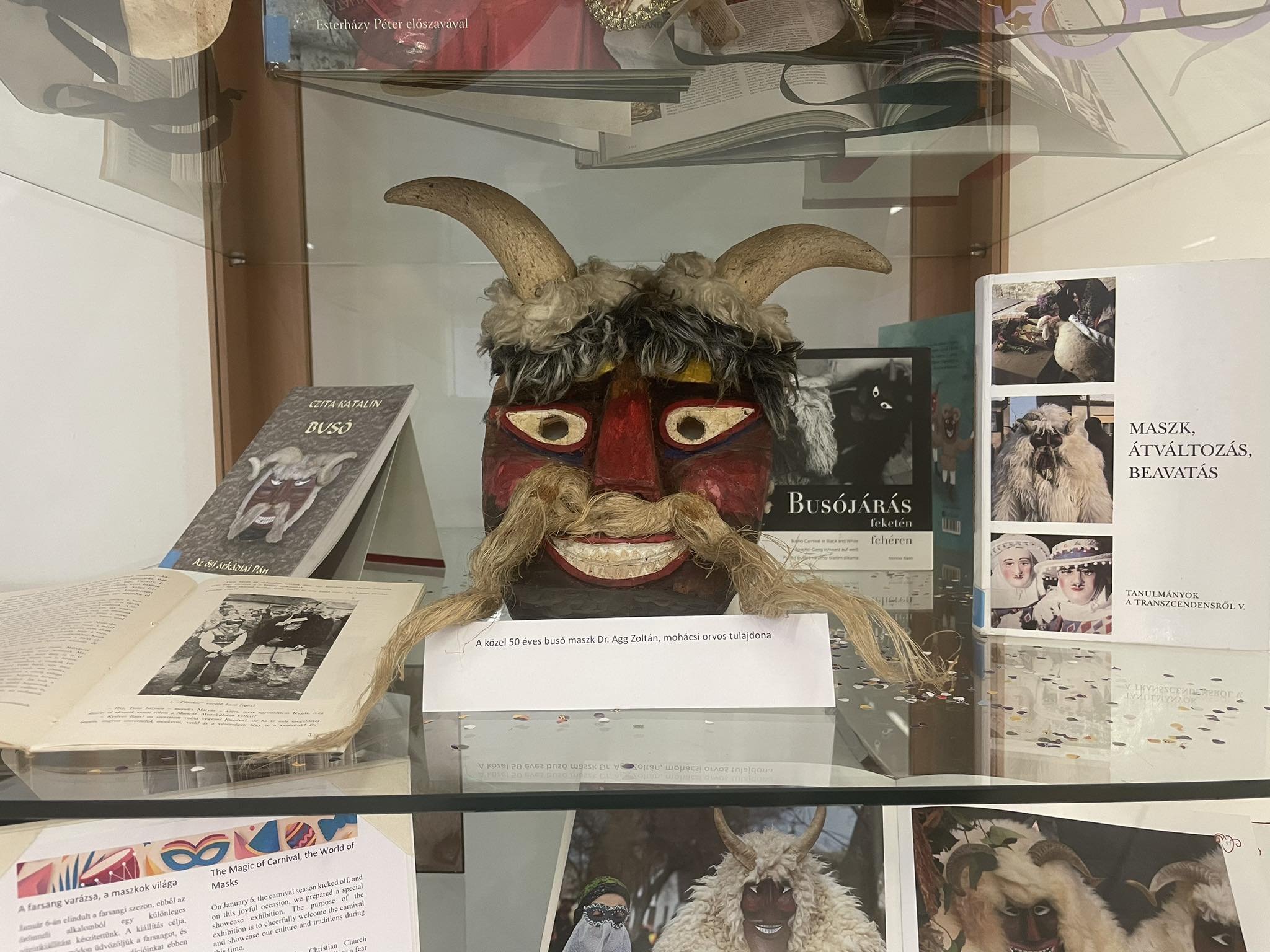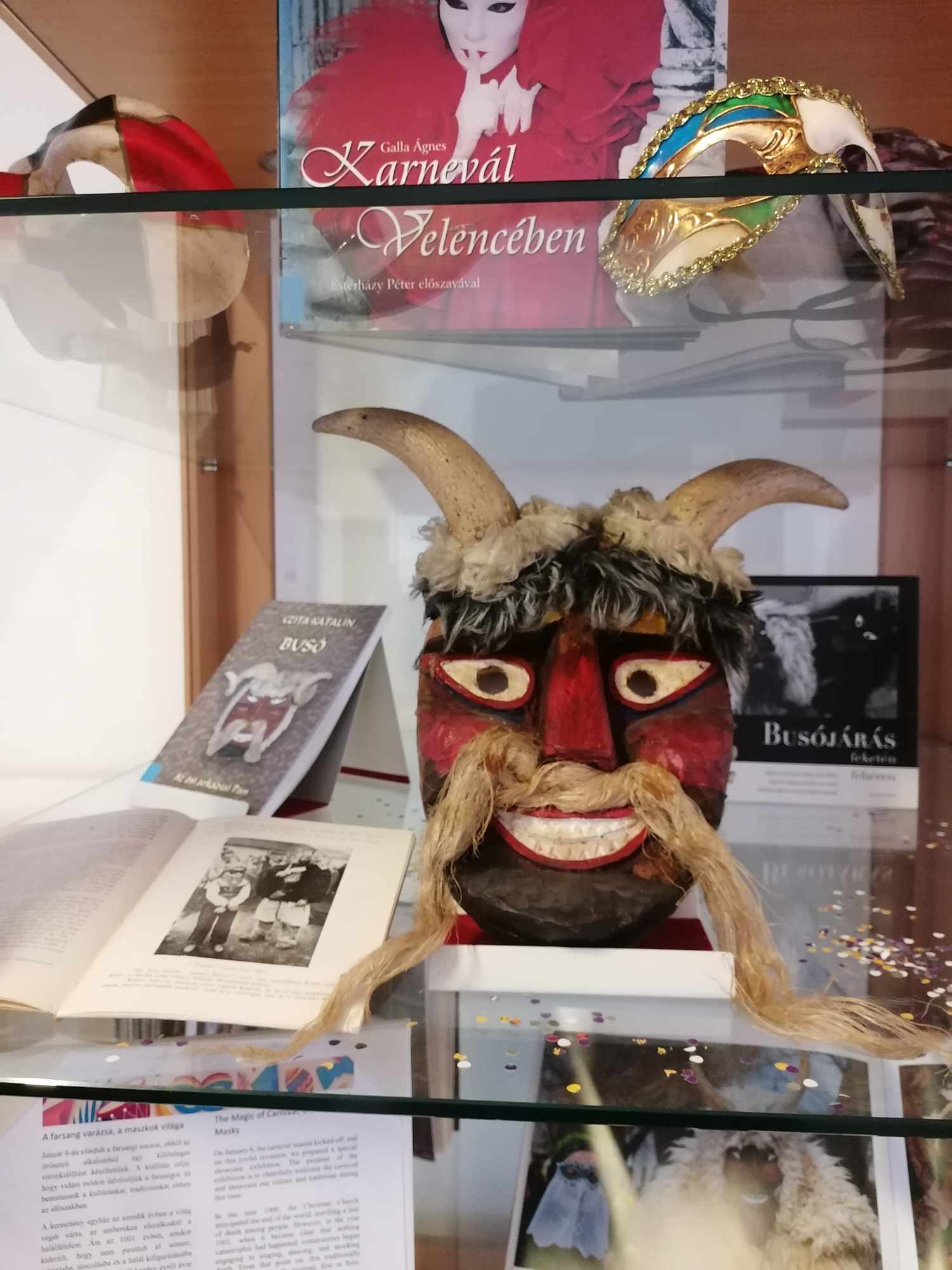The magic of carnival, the world of masks

On January 6, the carnival season began, and to celebrate this joyful occasion, we organized a special window showcase exhibicion on the ground floor of the Knowledge Center, right next to the registration desk. The purpose of the exhibition is to cheerfully welcome the carnival and showcase our culture and traditions during this time.
The Christian Church, in the year 1000, anticipated the end of the world, instilling a fear of death among people. However, in the year 1001, when it became clear that nothing catastrophic had happened, communities began engaging in singing, dancing, and mocking death. From that point on, this traditionally recurring death parody evolved, first in Italy.
Hungary's folk carnival was first mentioned in the 16th-century notes of Gáspár Heltai. "The events follow after January 6, after the birth of our Lord Jesus Christ, it is the great celebration of the devil, the storytelling week, the carnival, etc."
Over centuries, folk carnival traditions have blended with other winter customs and elements of the civil carnival. In folk carnival, pagan beliefs related to fertility and abundance are present. However, during the carnival period, folk games such as the outlaw, wedding, funeral, stork, and bear carnivals take center stage.
In today's era, even if the explanation and purpose of Carnival may no longer be as prevalent, people still eagerly anticipate the renewal of life in nature and the freshness of spring.
January-February is the time of carnivals and colorful spring events. During this time, students wear carnival costumes. However, the original ethnographic traditions are fading away. We have selected books and some items from the university library's ethnographic collection for our carnival window display.
Hungary's most famous spring-welcoming event is the Mohács Busójárás, a tradition practiced by the Šokci ethnic group, which is part of the South Slavic community. On September 30, 2009, the Mohács Busójárás was inscribed on UNESCO's Representative List of the Intangible Cultural Heritage of Humanity.
The Busójárás is a characteristic event of Mohács. Guests come from all over the country, and it is increasingly popular among foreigners worldwide. The true heart and soul of this tradition lie in the fact that local families in Mohács pass down this colorful heritage from generation to generation, encompassing everything from carving masks to crocheting peculiar stockings.
The busós celebrate the Busójárás according to the so-called Busójárás Codex, which addresses dressing and behavior. The festivities begin on the Thursday before Carnival. This is the "Little Carnival," and during this time, children take center stage on Mohács's main square. The program starts with performances by preschoolers and schoolchildren related to Busójárás. Then, the celebration continues in a small family circle. On the Carnival weekend, the streets of Mohács are filled with the sounds of the busós.
The exhibition is on display at:
Southern Transdanubian Regional Library and Knowledge Center, Ground Floor Atrium, next to the registration desk (Pécs Universitas u. 2/A)
Photos: Kádár Johanna
Curated by: Eby Varghese Anna, Gergely Zsuzsanna, Kádár Johanna
